Carbohydrate reduces TAN and nitrite-N levels in experimental tanks
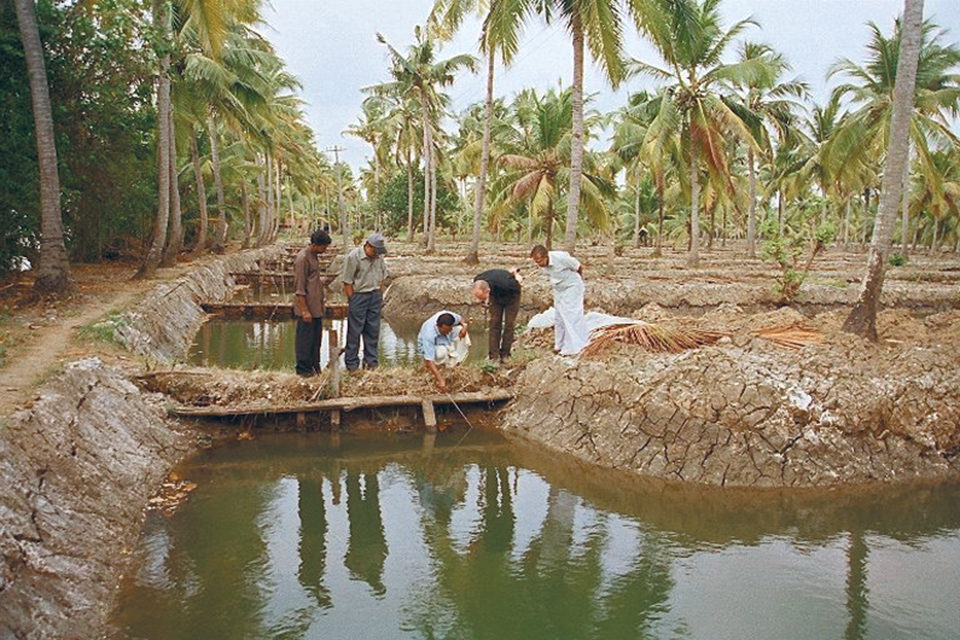
Adding a carbon source to intensive shrimp production systems can control total ammonia nitrogen (TAN) levels and improve feed conversion. Studies have shown that immobilization of inorganic nitrogen only occurs when the carbon:nitrogen (C:N) ratio of the organic matter is higher than 10.
Immobilization of TAN results in the production of bacterial cells rich in single-cell protein that can be utilized as food by carp, tilapia and shrimp. As a result, the feed-conversion ratio of the supplemental feed applied to ponds decreases, making it possible to use lower-cost, lower-protein feeds.
Although commonly applied in intensive aquaculture, the technique of C:N ratio control is not used in extensively managed ponds, even though these systems support much of the farmed shrimp production worldwide. The authors recently evaluated the effects on water quality and production of adding organic carbon to extensive stagnant shrimp ponds in India.
Continuous mixing to keep dissolved and particulate matter dissolved in the water column is a key factor in the success of C:N ratio manipulation in intensive systems. The challenge, therefore, was to determine if the added carbohydrates would positively impact water quality before precipitating to the bottom.
Dual trials
The goals of the study were to evaluate the combined effects of reducing the protein content in supplemental feeds and carbohydrate addition in extensively managed ponds containing black tiger shrimp (Penaeus monodon). To reduce costs, an indoor trial in small replicate tanks was conducted to develop the technique before applying it to farmers’ ponds.
In both experiments, 20 grams of tapioca flour was added for each gram of NH4+ (ammonia-nitrogen) released. The amount of ammonia-nitrogen released was estimated assuming that 50 percent of the dietary protein input was converted to ammonia.
In consequence, 0.39 kg of tapioca flour was added for each kg of the 25 percent-protein feed used in the trials. For one kg of the 40 percent-protein diet used, 0.62 kg tapioca flour was added. In the indoor experiment, the photoperiod was maintained at 12 hours dark and 12 hours light.
Indoor experiment
The indoor experiment was carried out in triplicate 1,200-liter tanks for each of four diet treatments. Twenty-five and 40 percent crude protein diets were applied, with or without carbohydrate addition, resulting in treatments referred to as P25, P40, P25+CH, and P40+CH. Shrimp were fed initially at 15 percent body weight, which was gradually reduced to 6 percent toward the end of the culture. The sinking feed pellets were distributed evenly over the tank surfaces twice daily.
All tanks were filled with 26-ppt saline water and provided a uniform 4-cm sediment layer taken from an extensive shrimp culture pond. The water level in the tanks was maintained at 50 cm. Uniformly sized 0.36-gram shrimp juveniles were stocked at a density of 6 animals per square meter. The tanks were fertilized with urea and super phosphate at rates of 4 and 1 grams per square meter per week, respectively, during the first three weeks of the experiment.
Indoor results
The addition of carbohydrate reduced the TAN and nitrite-N levels in the experimental tanks. The high-protein diet resulted in higher levels of TAN, nitrite-N, and total nitrogen concentrations. There was no effect on the organic carbon content of the sediment, but the addition of carbohydrate caused a significant reduction of sediment TAN. The total heterotrophic bacteria count in the water column and sediment were higher in treatments with added carbohydrate.
Table 1 shows the effects of carbohydrate addition and protein levels on various yield parameters. The specific growth rate and feed conversion ratio were similar in the P40 and P25+CH treatments. The protein efficiency ratio was highest in treatment P25+CH. The survival was 80 to 88 percent and did not vary between treatments.
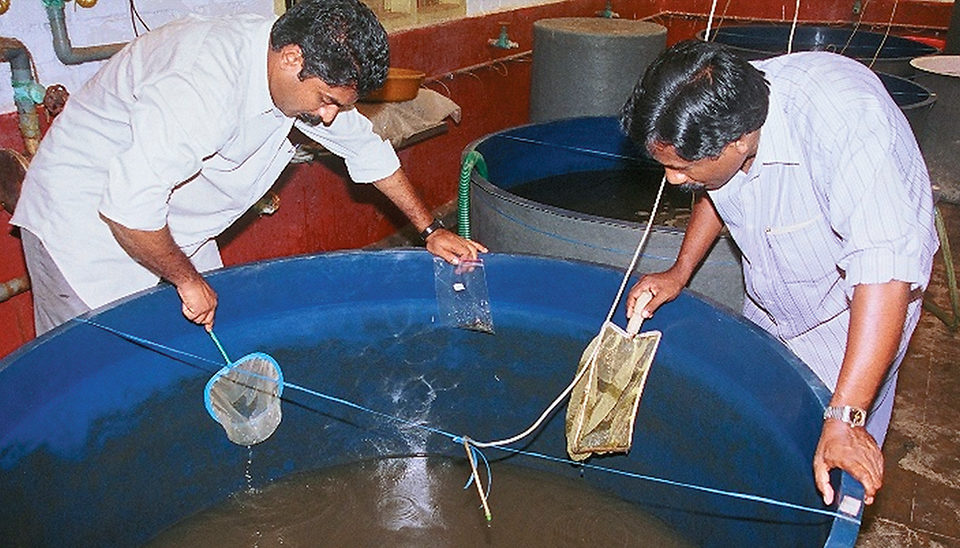
Verdegem, Effects of carbohydrate, Table 1
| Treatment Means P25 | Treatment Means P25+CH | Treatment Means P40 | Treatment Means P40+CH |
|
|---|---|---|---|---|
| Indoor Trial | ||||
| Specific growth rate (% bw/day) | 2.6c | 3.4b | 3.4b | 3.8a |
| Feed-conversion ratio | 6.4a | 3.0b | 3.0b | 2.4b |
| Nitrogen retention (%) | 16.3c | 28.9a | 17.1c | 22.4b |
| Protein efficiency ratio | 0.6c | 1.3a | 0.9c | 1.1b |
| Survival rate (%) | 81 | 89 | 89 | 89 |
| Farm Trial | ||||
| Specific growth rate (% bw/day) | 7.9a | 7.7b | ||
| Feed-conversion ratio | 1.6b | 2.2a | ||
| Nitrogen retention (%) | 45.3a | 19.8b | ||
| Protein efficiency ratio | 2.5a | 1.2b | ||
| Survival rate (%) | 42 | 36 |
Mean values in same row with different superscripts differ significantly (P < 0.05).
Pond experiment
In the farm trial, eight 250-square-meter earthen ponds were stocked at 6 PL20 per square meter. Treatments P40 and P25+CH were applied to four replicate ponds each. Initially, lime was applied at 2,000 kilograms per hectare and cow dung at 1,000 kilograms per hectare. Urea and single super phosphate were added biweekly to the water column at 80 and 20 kilograms per hectare, respectively, during the first two months of culture to initiate algal blooms in the ponds. Lime was added to the ponds at 5 kilograms per pond biweekly.
Pond results
TAN concentrations in the water column and sediment were lower in treatment P25+CH than P40. The addition of carbohydrate had a profound effect on the heterotrophic bacteria count (Fig. 1). Shrimp yield and individual shrimp weight at harvest were higher in treatment P25+CH than P40. Growth rates, feed conversion, and protein efficiency were also better for P25+CH. Survival was 36 to 42 percent and not different between treatments (Table 1).
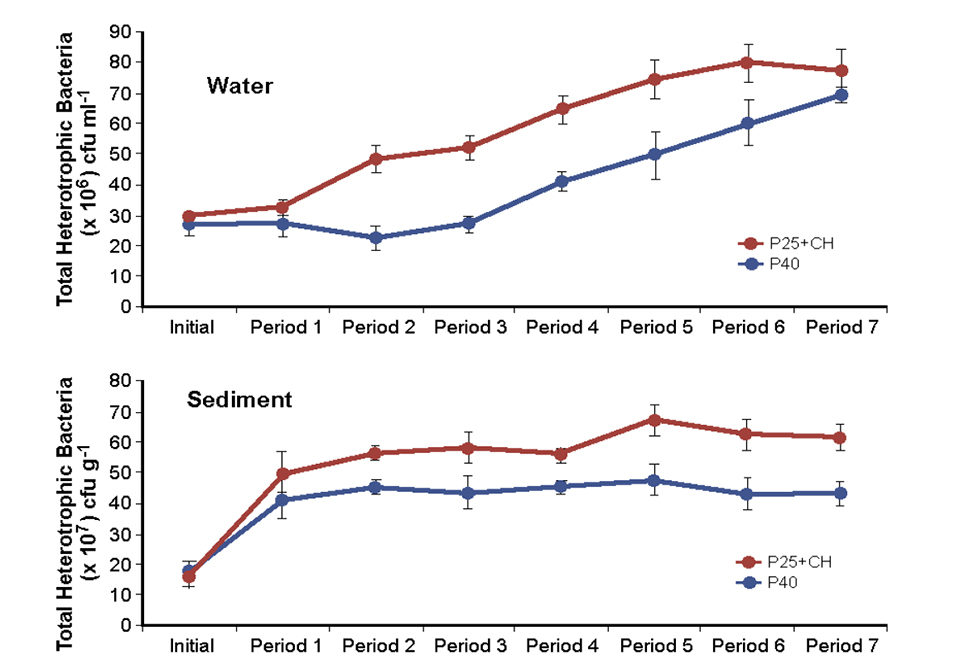
Cost computations
The combined cost of feed and carbohydrate for treatment P25+CH was lower than for P40 due to the higher cost of high-protein shrimp feed – Rs. 46 (U.S. $1.03) against Rs. 26 ($.58) per kilogram. The harvested shrimp from P25+CH came under count 40 compared to count 50 for treatment P40.
The revenue per hectare from the harvested shrimp was 54 percent higher in P25+CH than P40 due to the combined effect of better yield and higher prices for bigger shrimp (Table 2). A 35 percent reduction in feed cost was recorded in the P25+CH treatment when compared to treatment P40. The benefit:cost ratio was significantly higher in treatment P25+CH than P40.
Verdegem, Economic analysis of farm equipment, Table 2
| Treatment P25+CH | Treatment P40 |
|
|---|---|---|
| Variable costs | $1,729 | $2,182 |
| Fixed costs | $134 | $134 |
| Production costs | $1,863 | $2,316 |
| Shrimp yield (kg) | 644.3 | 447.9 |
| Shrimp price | $7 | $6 |
| Gross return | $4,329 | $2,809 |
| Net profit | $2,465 | $492 |
| Benefit:cost ratio | 1.3 | 0.2 |
(Editor’s Note: This article was originally published in the February 2005 print edition of the Global Aquaculture Advocate.)
Now that you've reached the end of the article ...
… please consider supporting GSA’s mission to advance responsible seafood practices through education, advocacy and third-party assurances. The Advocate aims to document the evolution of responsible seafood practices and share the expansive knowledge of our vast network of contributors.
By becoming a Global Seafood Alliance member, you’re ensuring that all of the pre-competitive work we do through member benefits, resources and events can continue. Individual membership costs just $50 a year.
Not a GSA member? Join us.
Authors
-
M.C.J. Verdegem
Fish Culture and Fisheries Group
Wageningen Institute of Animal Sciences
Wageningen University
P.O. Box 338
6700 AH Wageningen
The Netherlands -
J.W. Schrama
Fish Culture and Fisheries Group
Wageningen Institute of Animal Sciences
Wageningen University
P.O. Box 338
6700 AH Wageningen
The Netherlands -
B. Hari
School of Industrial Fisheries
Cochin University of Science and Technology
Cochin, India -
M.B. Kurup
School of Industrial Fisheries
Cochin University of Science and Technology
Cochin, India -
J.T. Varghese
School of Industrial Fisheries
Cochin University of Science and Technology
Cochin, India
Related Posts

Intelligence
Bangladesh seeks more buck for its ‘bagda’
As more than 80 percent of Bangladeshi shrimp exports already go to EU markets, a consultation meeting involving buyers from the bloc and Bangladesh industry stakeholders and authorities was held at the end of last month in Utrecht, the Netherlands.
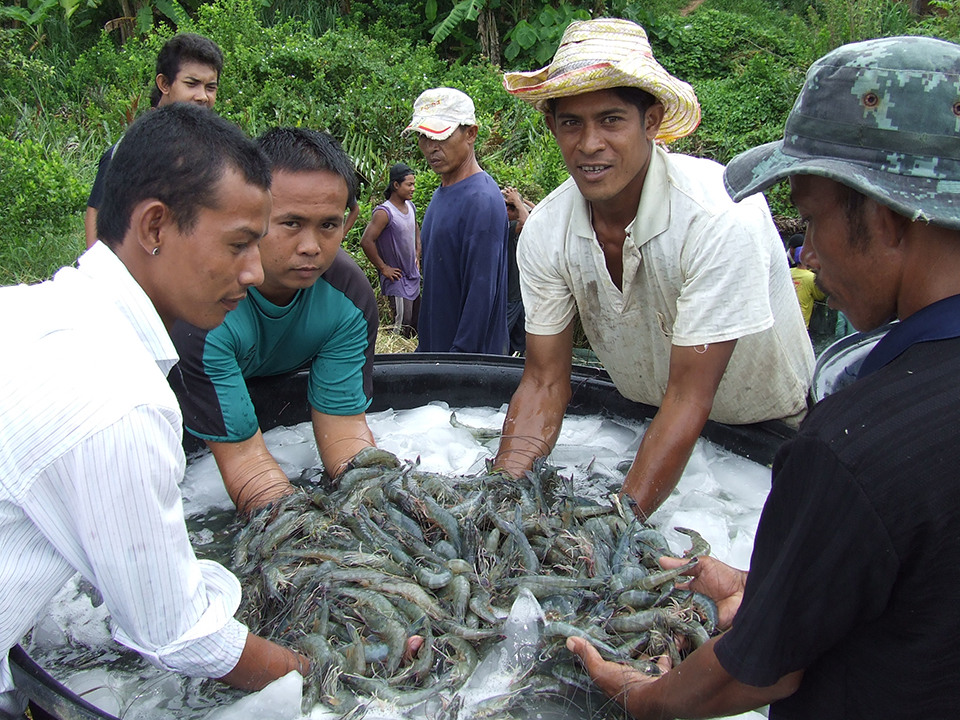
Health & Welfare
Blue alternative: High Health introduces SPF blue shrimp to Thailand
Blue shrimp are very similar to Pacific white shrimp, and can be raised under similar conditions. Blues grow faster and tolerate lower water temperatures.
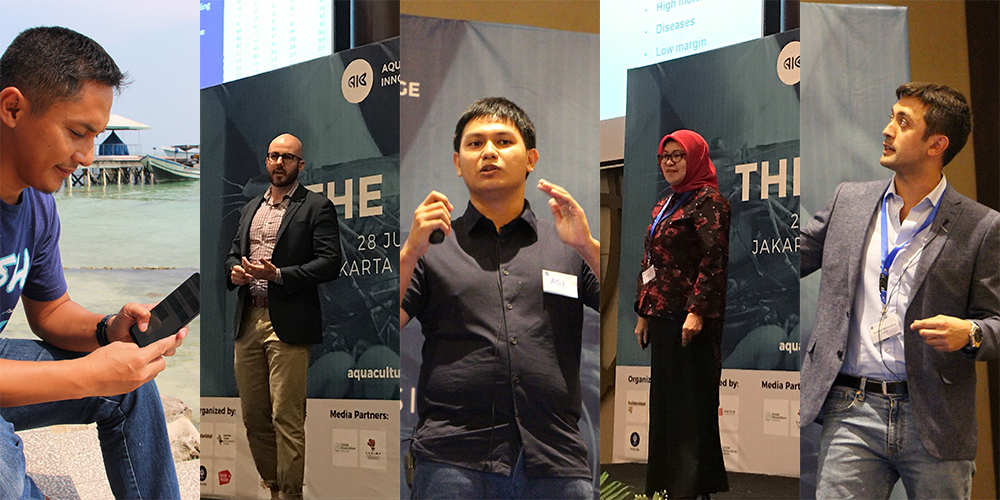
Innovation & Investment
Aquaculture Innovation Challenge taps startup spirit to lift Indonesia’s shrimp sector
The Aquaculture Innovation Challenge, a contest organized by Netherlands-based Seafood Trade Intelligence Portal, sought to give Indonesia’s struggling shrimp sector a boost.
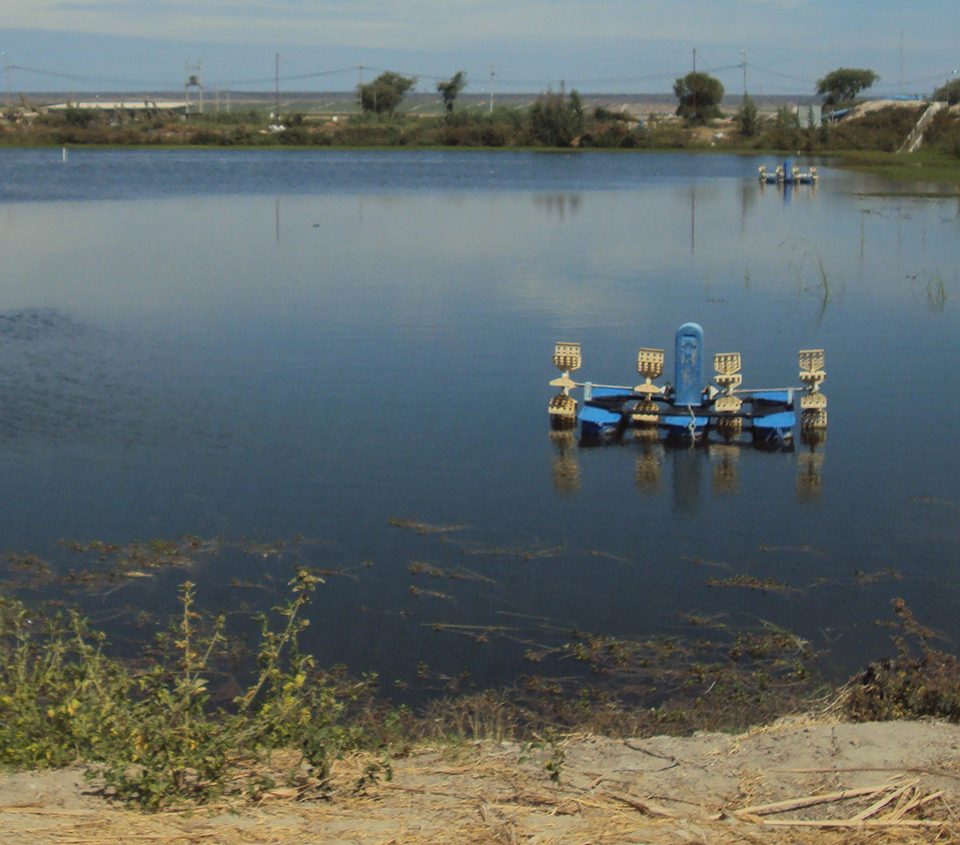
Health & Welfare
Manage pH cycles to maintain animal health
The ideal pH for most aquaculture species is between 6.0 and 8.5. Lower pH values may result in decreased growth and survival, and greater susceptibility to disease. pH typically is lowest in the early morning, increases during the afternoon and declines at night.


